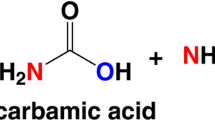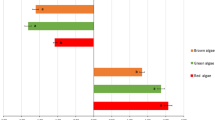Abstract
IN a recent note, Elson1 has shown that ascorbic acid at low concentrations inhibits urease activity, and that this inhibition is prevented by addition of cysteine. Quastel2 suggests that the inhibition of the activity by ascorbic acid is due to the oxidized form of ascorbic acid, namely, the diketone (dehydro-ascorbic acid) and not to the ascorbic acid itself. The disappearance of the inhibition on the addition of cysteine has been attributed to the reduction of the dehydroascorbic acid to the inert ascorbic acid. It seemed to us more probable that the action of ascorbic acid is not connected with either ascorbic acid or dehydroascorbic acid, but with the oxidation of the vitamin by traces of heavy metals like copper present in the reaction mixture. For several years we have been investigating the influence of ascorbic acid on enzymes, and we have obtained results showing that the vitamin as such or the dehydroascorbic acid has very little influence on the enzymes (phosphatases and amylase); but when the vitamin is oxidized by traces of copper present in the reaction mixture the enzyme is inhibited to a considerable extent. It was also found that substances which inhibit the oxidation of ascorbic acid annul the inhibition by the vitamin. In the light of these results we have now investigated the influence of ascorbic acid, dehydroascorbic acid and substances which inhibit the oxidation of the vitamin, on urease. The experimental method adopted was as follows.
This is a preview of subscription content, access via your institution
Access options
Subscribe to this journal
Receive 51 print issues and online access
$199.00 per year
only $3.90 per issue
Buy this article
- Purchase on Springer Link
- Instant access to full article PDF
Prices may be subject to local taxes which are calculated during checkout
Similar content being viewed by others
References
Elson, L. A., NATURE, 152, 49 (1943).
Quastel, J. H., NATURE, 152, 215 (1943).
Giri, K. V., NATURE, 141, 119 (1938); Z. physiol. Chem., 254, 126 (1938); Biochem. J., 33, 309 (1939). Seshagiri Rao, P., and Giri, K. V., Proc. Indian Acad. Sci., 168, 190 (1942).
Giri, K. V., and Krishnamurthy, P. V., NATURE, 147, 59 (1941). Stotz. E., Harrer, C. J., and King, C. G., Science, 86, 33 (1937); J. Biol. Chem., 119, 511 (1937).
Author information
Authors and Affiliations
Rights and permissions
About this article
Cite this article
GIRI, K., SESHAGIRI RAO, P. Urease Activity and Ascorbic Acid. Nature 153, 253–254 (1944). https://doi.org/10.1038/153253b0
Issue Date:
DOI: https://doi.org/10.1038/153253b0
This article is cited by
-
Interaction of Vitamin C and urease
Proceedings / Indian Academy of Sciences (1952)
Comments
By submitting a comment you agree to abide by our Terms and Community Guidelines. If you find something abusive or that does not comply with our terms or guidelines please flag it as inappropriate.



